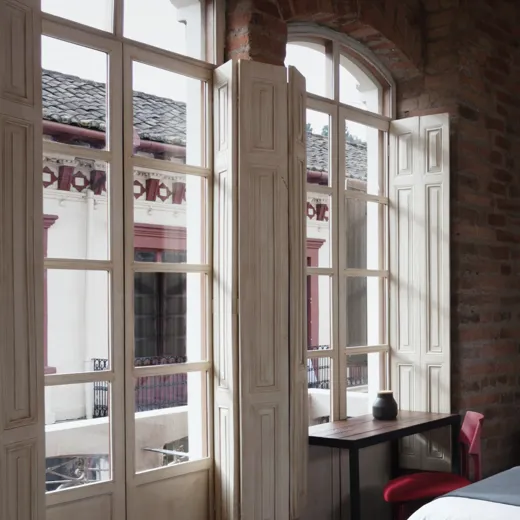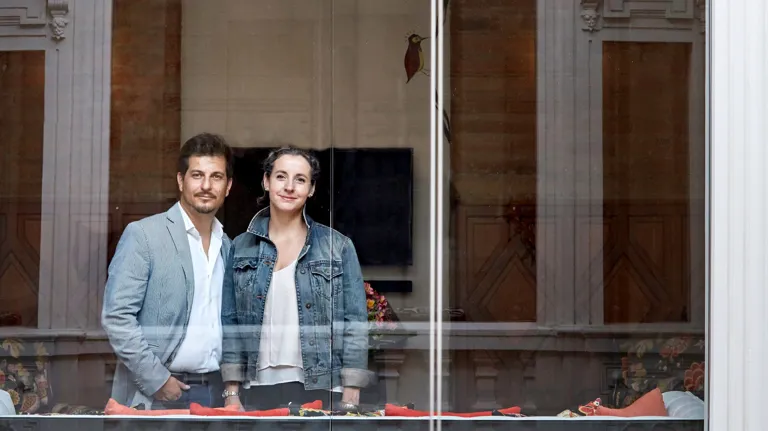

Location
Nearest train station
Architecture
Green Certification
Date 08 November 2021
Quito’s Carlota has had sustainability at its heart from the outset. Created by Renato Solines and Veronica Reed, the hotel is housed in Solines’ grandmother’s home, originally built in 1905. The couple went through a four-year process to restore the space to its original spirit, recovering 90% of the building—including walls, flooring, doors, and windows—and adding their contemporary touch through vibrant color and geometric patterns. Whenever possible, they used the home’s original furniture and built new pieces, such as desks and benches, with wood reclaimed from other construction sites. Today, the hotel is a cultural beacon in the community, hosting events, exhibitions, and salon talks and sourcing food from local, organic producers. Carlota became Ecuador’s first certified B Corporation hotel in October 2019.
Veronica Reed, one of the Originals behind Carlota
Carlota
Learn more about our Conscious Hotel Principles. Discover our Conscious Hotels.
The Originals Renato Solines & Veronica Reed
